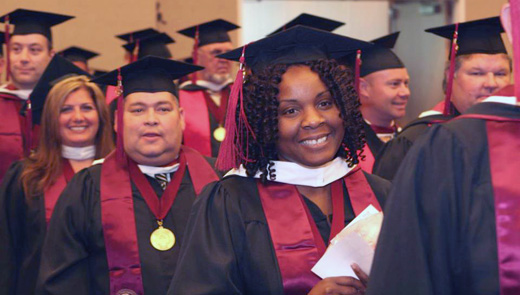
SILVER SPRING, Md. (PAI) – Faced with a continuing tide of red ink, no endowment, and constant turnover at the top, the National Labor College‘s board voted Nov. 12 to close the college. No date was set, but the closure is expected soon.
“I am deeply saddened to report that yesterday the Board of Trustees directed me and the college’s officers to develop a plan to close the college,” the institution’s president, Dr. Paula Peinovich, said in a statement posted on its website.
“The college has been facing significant financial difficulties and the board reluctantly decided to accept the inevitability of our closure. We do not have a specific date for closure yet, but will provide information as soon as we can, detailing how the shutdown will proceed. This process will likely take many months,” she said.
Peinovich said the remaining faculty and administrators would develop “a concrete timeline with multiple options” for current students to finish their course work and get their degrees. She was not specific.
“It’s a real tragedy. This is something the labor movement absolutely needs,” said one former top college employee.
The college’s closing is important because it is virtually the only entire institution in the U.S. that has labor studies – everything from history to organizing techniques to collective bargaining – at its center. Over the years, thousands of unionists came to the college to study those fields and others, from labor’s point of view.
By contrast, most major colleges and universities have business schools, teaching corporate techniques and schemes. Those schools ignore workers-at best – or offer “efficiency” courses in how to “use” workers. And state universities with labor studies programs find their programs under political or financial fire, or both. The latest threat, a fiscal one, is at the University of Illinois at Champaign-Urbana.
The National Labor College grew out of the George Meany Center for Labor Studies. In 2012, trustees put the campus, in Silver Spring, Md., a D.C. suburb, up for sale and planned to make the college an entirely online institution. A recent possible sale of the campus, which also includes a memorial to workers killed on the job, failed.
Meanwhile, red ink grew to some $30 million. Federation President Richard Trumka told his AFL-CIO Executive Council colleagues at a meeting at the college several years ago that the fed could not continue subsidizing the NLC. Trumka also chairs the college’s board.
The problem worsened when the Change to Win unions left the AFL-CIO in 2005. Without an endowment, the AFL-CIO and individual unions are the college’s main financial support. The fed had provided bridge loans.
Turnover at the top hurt. Peinovich, who left retirement to run NLC after previously running a private for-profit online college-with plans to ally the two-is its fourth president in five years. There has also been constant turnover in other top administrative offices. Most of the full-time faculty, represented by the Washington-Baltimore Newspaper Guild, took buyouts when the college offered them. The Guild also represents part-time faculty at the college.
“That turnover is bad for any institution,” the former employee added.
And NLC presidents did not devote time to fundraising, the number one priority of college presidents-public or private-nationwide. The trustees also approved a 5-year master plan, posted on the college’s website. But for various reasons, nobody has followed it, the ex-employee said. A national marketing plan went unimplemented.
“The board is responsible for any non-profit organization,” but did not exercise sufficient oversight, he added. Calls to various board members for their analysis of why they decided to close the college were not returned, as of Nov. 14.










